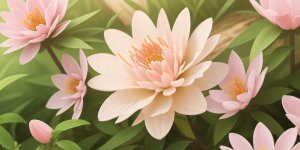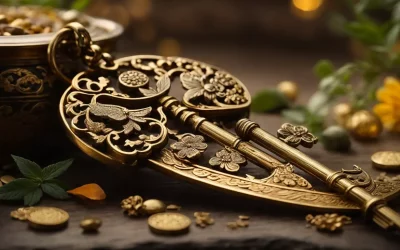Diving into the world of Traditional Chinese Medicine (TCM), one might come across the concept of the Wood element, also known as jing. This intriguing aspect plays a significant role in the balance of food and personality, according to the Five Elements Theory. But what exactly is the Wood Element in Traditional Chinese Medicine? Let’s explore. The Wood Element, also known as jing, in Traditional Chinese Medicine, symbolizes life force energy. It’s crucial in harmonizing food and personality, acting like a personal landscaper for the body, directing growth and prosperity. It’s believed to maintain balance in health and emotions. Curious to know more about how the Wood element influences your health and personality? Keep reading to delve deeper into this fascinating aspect of Traditional Chinese Medicine and discover how it could be impacting your life.
- The Five Element Theory: Emphasis on Wood
- The Wood Element and the Season of Spring
- The Sour Taste: Its Significance in Wood Element
- Balancing Qi, Blood, and Emotions in TCM
- Wood Element: Associated Organs and Emotions
- Harnessing the Power of Wood Element
- Wood Personality Traits and Characteristics
- Lifestyle and Dietary Tips for Wood Constitutions
- Conclusion: Understanding the Wood Element in Traditional Chinese Medicine
The Five Element Theory: Emphasis on Wood
Understanding the Five Element Theory
The Five Element Theory, a key concept in Traditional Chinese Medicine (TCM), is a system that categorizes natural phenomena into five groups, or elements. These elements are wood, fire, earth, metal, and water. Each element, much like an herb in medicine, has unique characteristics and associations. They can be used to understand symptoms in the body and balance life force energy. The elements theory suggests that the wood element, akin to a herb, symbolizes growth and vitality. Just like a tree that needs to grow upwards towards light, or people needing to progress in life, the wood element represents this upward movement. This is akin to the circulation of blood, vital for life’s sustenance.
Interactions of Wood with Other Elements
In this elements theory:
- Wood feeds Fire
- Fire creates Earth
- Earth bears Metal
- Metal collects Water
- Water nourishes Wood
This cycle, based on elements theory, demonstrates how each element supports others. There’s also a controlling function to maintain balance, much like blood in the body.
- Wood parts Earth
- Earth dams Water
- Water extinguishes Fire
- Fire melts Metal
- Metal chops Wood
These interactions ensure equilibrium among the elements.
The Impact of Wood on Health
As per TCM principles and elements theory, wood influences health through its associated organs – liver, gallbladder, and kidney. A balanced wood element promotes smooth flow of Qi (energy) and blood throughout your body, reflecting in healthy skin and absence of kidney-related symptoms. For example:
- When your liver functions well, you experience good digestion.
- An imbalance in the wood element might cause irritability or anger, symptoms of stagnant Qi in the gall bladder meridian system.
Role of Wood in Balancing Elements
To maintain harmony among elements:
- If your earth element is weak, perhaps manifesting symptoms like gall bladder issues or lethargy, consider strengthening it by eating green foods like spinach or broccoli.
- Experiencing symptoms of excessive anger? You might need to balance your wood energy system, a key element in holistic health. Calm this earth element down with soothing activities like yoga or meditation.
Remember, this isn’t just a quiz! It’s about understanding how different aspects of our lives, such as symptoms we experience, can be linked back to these ancient theories like element theory. These elements and the meridian system play a crucial role in our understanding.
The Wood Element and the Season of Spring
 Spring and Wood: A Connection
Spring and Wood: A Connection
Spring is that time of the year when everything starts to grow, similar to how water nourishes wood, an element in the meridian system. It’s a cycle. In traditional Chinese medicine, this season correlates with the wood element of the meridian system. As nature turns green, people who have a dominant wood constitution in their meridian system may feel an impact.
- Things start to get a bit hot during spring.
- You might notice more stagnation at home.
- Some folks crave sweets or sugar.
These are all parts of the wood element in the meridian system gearing up for spring.
Growth and Renewal
Spring signifies growth and renewal, which mirrors the characteristics of the wood element in the meridian system of traditional Chinese medicine.
- In the element theory, wood symbolizes growth, just as plants start sprouting in spring within the system of the meridian elements.
- As the winter snow melts away in the system of renewal, it makes way for greenery, aligning with the meridian and element theory.
- Just as trees need water to grow, we also need to hydrate more during hot weather.
This cycle of growth and renewal is essential for individuals governed by the wood element.
Health Implications
For those governed by the wood element, spring can bring about certain health implications:
- They might experience a surge in energy levels.
- There could be a tendency towards anger or frustration due to increased energy flow.
- Their diet may need adjustments – less cold foods like salads and more warm foods like cooked vegetables.
In essence, understanding what is the wood element in traditional Chinese medicine helps us navigate through life’s seasons with better health awareness. So next time you see things turning green in spring, remember it’s not just about nature; it’s also about your body responding to this amazing cycle of life!
The Sour Taste: Its Significance in Wood Element
In the realm of Traditional Chinese Medicine (TCM), sour taste and the wood element are like two peas in a pod. They’re tight, you know?
Sourness and Wood Element
- It’s all about balance. Too much or too little can mess up your mojo.
- Sour foods have a big impact on organs associated with the wood element, like the liver and gallbladder.
- Eating sour foods can help restore balance if you’re heavy on wood energy.
But hey, don’t go overboard with those pickles!
Balance through Sour Foods
- The magic happens when you eat just enough salty foods to keep things in check.
- Overdoing it can lead to imbalances, so moderation is key.
It’s not about avoiding sour foods altogether. It’s about finding that sweet spot between too much and too little. That’s how you keep your wood energy in check!
Balancing Qi, Blood, and Emotions in TCM
The Role of Qi and Blood Flow
TCM or Traditional Chinese Medicine sees a strong connection between your emotions and overall health status. This is where the wood element comes into play. It’s all about liver qi and blood flow. Picture your qi like a river flowing through you, distributing energy (jing) to every part of your body. When this flow is smooth, you’re in balance.
- A blockage? That’s what we call qi stagnation.
- Too much energy? You’ve got liver qi stagnation.
These imbalances can lead to numerous problems such as anxiety, menstrual issues including period pain, and stress affecting the nervous system.
Techniques for Harmonizing Energy Flow
To bring back harmony within our body, TCM uses techniques like:
- Acupuncture
- Herbal remedies
Ginger is one such remedy often used to stimulate the defensive qi and enhance breathing.
Emotional Stability: Key to Balanced Energy Flow
It’s not just about physical well-being though! Your mind plays a crucial role too. In TCM lingo, emotional stability ensures yin (rest) and yang (activity) are in balance. If they’re not – hello again, liver qi stagnation!
Consequences of Imbalance
Ignoring these imbalances can lead to serious consequences:
- Illnesses
- Disorders
So next time you feel out of sorts – check in with yourself. Are your emotions running high? Is there tension in your body? These could be signs that your wood element needs some TLC! You can read more about the 5 Element Theory Emotions here.
Wood Element: Associated Organs and Emotions
Organs and Emotions
The wood element in traditional Chinese medicine (TCM) associates the liver organ and its partner organ, the gallbladder. These elements play a key role in our organ system, particularly within TCM’s holistic approach.
- Liver Organ: It’s not just about detoxification! The liver, according to TCM, is also tied to emotions like anger and frustration.
- Gallbladder: This little guy aids digestion but is also linked with decisiveness in TCM.
Influence on Physical Health
These organs ain’t just for show! They influence muscle strength, eye health, tendons. So you’ve got:
- Muscle Strength: Strong liver = strong muscles.
- Eye Health: Ain’t no seeing clearly without a healthy liver!
- Tendons: Keep your bendy bits in top shape with a well-functioning gallbladder.
 Emotional Wellbeing
Emotional Wellbeing
Hang on to your hats ’cause it gets deeper! In TCM, emotional wellbeing affects physical health. For example:
- Feelings of anger can impact the liver organ.
- Frustration might mess up your gallbladder.
So remember folks, keep those emotions in check! This ain’t all there is to know about the wood element. There are other elements too like earth element relating to stomach and spleen; water element connected to kidney organ; heart organ under fire element; lung organ associated with metal element. But that’s another story for another day! Just remember – every emotion you’re feeling? It could be affecting an organ. Every ache or pain? Could be down to an unhappy element. So take care of yourself – body and mind!
Harnessing the Power of Wood Element
Tap into Wooden Energy
Ever thought about how to harness your inherent wooden energy? Here’s a few ways:
- Get Creative: The wood element in traditional Chinese medicine is all about creativity and leadership. So, pick up that paintbrush, or take on that project at work. Show ’em who’s boss!
- Meditate: Meditation and yoga can help you connect with your life force energy. It’s like tuning an instrument – you gotta find the right balance.
- Eat Right: Certain foods can boost your wood element energy. Think leafy greens and sour flavors.
Balance Your Energy
Now, let’s talk about managing the not-so-great stuff – those negative tendencies tied up with an excess or deficiency of wooden energy.
- Lifestyle Changes: Small tweaks in your daily routine can make a big difference. For example, if you’re feeling stuck (a sign of too much wood), try adding more fire element activities into your day. This could be anything from cooking to candle making.
- Stay Active: Physical activity can help keep your energy flowing and prevent stagnation.
Remember, it’s all about finding the right balance for you!
Wood Personality Traits and Characteristics
People dominated by the wood element in traditional Chinese medicine show certain personality traits. They’re assertive, competitive, and have a natural tendency to face challenges head-on.
Assertiveness and Competitiveness
- Assertiveness: Wood element folks aren’t shy about expressing their thoughts or standing up for themselves.
- Competitiveness: These individuals enjoy healthy competition. They thrive on challenges and often push themselves to achieve more.
Strengths and Weaknesses
Just like nature itself, people with a strong wood constitution have their strengths and weaknesses.
- Strengths: They’re typically ambitious, driven, and goal-oriented. Their assertive nature helps them take charge in situations.
- Weaknesses: On the flip side, they can be stubborn or inflexible at times. This rigidity can lead to stress or tension.
Interpersonal Relationships
The wood element’s influence extends beyond personal characteristics—it also impacts interpersonal relationships.
- Positives: Their assertive nature can inspire others. They’re often seen as leaders due to their drive and ambition.
- Negatives: However, their competitiveness can sometimes strain relationships if not managed well.
Understanding these traits can help us better navigate interactions with such individuals. For instance:
- Acknowledge their need for achievement
- Encourage flexibility when necessary
- Promote open communication to prevent misunderstandings
Coping Mechanisms
Individuals with a strong wooden constitution may face unique challenges due to their inherent tendencies. Some coping strategies include:
- Practicing mindfulness: Helps manage stress levels
- Engaging in physical activity: Provides an outlet for competitive energy
- Seeking balance: Balancing work-life activities prevents burnout
By recognizing these symptoms of the wood element personality type, we gain insight into how they perceive the world around them—and how best to interact with them!
Lifestyle and Dietary Tips for Wood Constitutions
Chew on This: Dietary Modifications
For folks with a dominant ‘wood’ constitution, certain foods can keep your health in check. Here’s what you should be chowing down:
- Grains: Think brown rice or quinoa. They’re easy on the digestive system.
- Leafy Greens: Spinach, kale, and the like help maintain liver energy.
- Salty Foods: In moderation, these can balance out any deficiency issues.
But remember, it’s not just about what you eat but also how you eat. Slow down, savor each bite, and avoid overeating to prevent digestive problems.
Get Moving: Exercise Routines
Exercise is a must-do for ‘wood’ types. It helps channel that overflowing liver energy in positive directions. Whether it’s yoga or running marathons – find your groove and stick with it!
Chill Out: Stress Management Techniques
Life getting too hectic? Try meditation or deep breathing exercises to keep those stress levels under control.
Don’t Go There: Habits to Avoid
Certain habits can throw ‘wood’ constitutions off balance:
- Boozing: Excessive alcohol consumption? Not a good option.
- Skimping on Sleep: Your body needs rest to function properly. Make sure you’re clocking in enough zzz’s.
So there you have it – some tips to navigate life as a ‘wood’ constitution! Remember – taking care of yourself isn’t just about avoiding the bad stuff but also incorporating good habits into your daily routine.
Conclusion: Understanding the Wood Element in Traditional Chinese Medicine
In a nutshell, the wood element plays a critical role in Traditional Chinese Medicine (TCM). It’s associated with spring, growth, and renewal. The sour taste is significant to the wood element, aiding in maintaining balance. Speaking of balance, it’s all about Qi, blood, and emotions in TCM. The liver and gallbladder are the organs linked to the wood element. Emotions like anger and frustration can indicate an imbalance. But don’t sweat it! Harnessing the power of this element is possible through lifestyle changes and dietary tips tailored for wood constitutions. Wood personalities? Yeah, they’re assertive and decisive but can be inflexible. So what’s next? Dive deeper into understanding your constitution or seek out a TCM practitioner for personalized advice. Remember – knowledge is power!
FAQ
What season is associated with the wood element?
Spring is associated with the wood element in Traditional Chinese Medicine.
What does sour taste signify in relation to Wood Element?
Sour taste helps maintain balance within the body according to Wood Element theory.
Which organs are related to Wood Element?
The liver and gallbladder are connected with Wood Element.
How can I harness the power of Wood Element?
You can harness its power through specific lifestyle changes and dietary modifications suitable for wood constitutions.
What personality traits are typical of people who have a dominant Wood Element?
People with a dominant wood element tend to be assertive, decisive but may also be inflexible at times.


 Spring and Wood: A Connection
Spring and Wood: A Connection Emotional Wellbeing
Emotional Wellbeing



